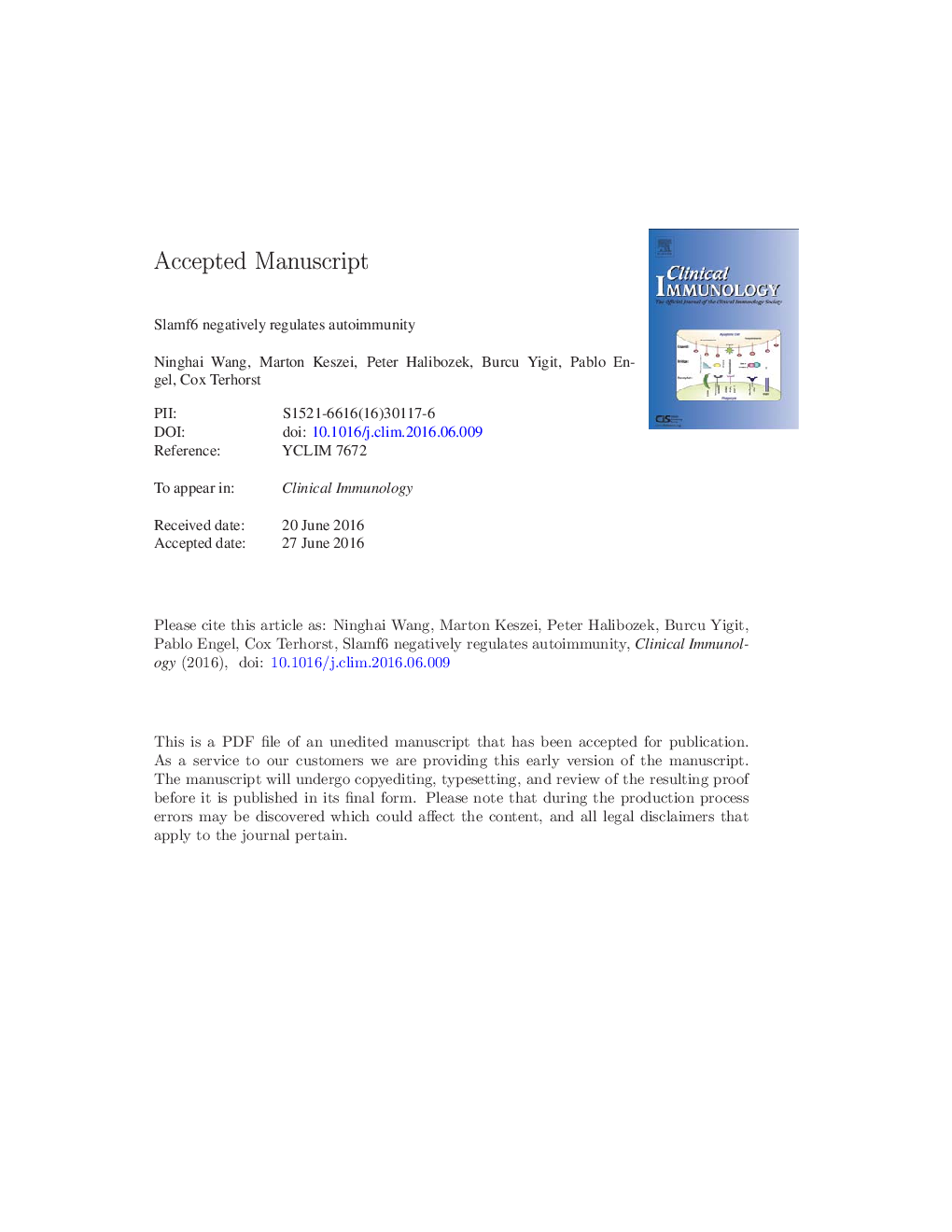| Article ID | Journal | Published Year | Pages | File Type |
|---|---|---|---|---|
| 5654961 | Clinical Immunology | 2016 | 33 Pages |
Abstract
The nine SLAM family (Slamf) receptors are positive or negative regulators of adaptive and innate immune responses, and of several autoimmune diseases. Here we report that the transfer of Slamf6â/â B6 CD4+ T cells into co-isogenic bm12 mice causes SLE-like autoimmunity with elevated levels of autoantibodies. In addition, significantly higher percentages of Tfh cells and IFN-γ-producing CD4+ cells, as well as GC B cells were observed. Interestingly, the expression of the Slamf6-H1 isoform in Slamf6â/â CD4+ T cells did not induce this lupus-like phenotype. By contrast, Slamf1â/â or Slamf5â/â CD4+ T cells caused the same pathology as WT CD4+ T cells. As the transfer of Slamf [1 + 6]â/â or Slamf [1 + 5 + 6]â/â CD4+ T cells induced WT levels of autoantibodies, the presence of Slamf1 was requisite for the induction of increased levels of autoantibodies by Slamf6â/â CD4+ T cells. We conclude that Slamf6 functions as an inhibitory receptor that controls autoimmune responses.
Keywords
Related Topics
Life Sciences
Immunology and Microbiology
Immunology
Authors
Ninghai Wang, Marton Keszei, Peter Halibozek, Burcu Yigit, Pablo Engel, Cox Terhorst,
